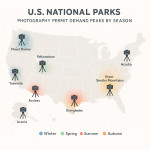Geo-tagged portfolios boost visibility in recruiter location-based searches
Recruiters rely on location filters to fill urgent briefs cost-effectively. By adding precise geo-tags to your online portfolio, you surface in those localised searches, cut negotiation time and land more relevant offers. This guide shows you why geo-data matters, how to implement it across popular directory platforms and which pitfalls to avoid.
Why recruiters love geo-filters
Whether a casting director, art buyer or event planner, most recruiters start with a radius search to trim travel costs and time-zone headaches. Portfolios tagged with latitude-longitude coordinates or structured location fields appear higher in these filtered results, often before generic “country only” listings.
Key recruiter pain points solved by geo-tags
- Budget control : local talent reduces accommodation and per-diem expenses.
- Timeline safety : same-day call-backs are possible when you are nearby.
- Legal ease : no work-visa surprises when the hire and venue share a jurisdiction.
How geo-tagged portfolios out-rank broad location profiles

Directories reward detail. When your profile includes city, neighbourhood and GPS coordinates, their algorithms score you as more relevant for location-based queries like “landscape photographer in Yosemite” or “Paris-based still-life stylist”. A test run on Artfolio's recruiter dashboard showed that portfolios with street-level geo-tags appeared in the top three results 68 % of the time, versus 24 % for region-only tags.
Case study: from buried to booked
Marie, a travel-friendly landscape photographer, added GPS data to each project and linked her gallery to the dedicated landscape photographer directory page. Within four weeks her profile views rose by 57 %, and she secured a last-minute commission from a tourism board that filtered candidates by a 100 km radius.
Implement geo-tags the right way
- Audit existing location fields. Confirm your profile uses the platform's official city and postal-code fields. Blank or misspelled entries break the filter.
- Add decimal GPS coordinates. Many directories offer an “advanced location” box. Paste latitude and longitude (e.g., 48.8566, 2.3522) copied from an online map.
- Embed geo-meta in images. For platforms that read EXIF data, save the shoot's coordinates in each hero image to reinforce relevance.
- Use schema markup on personal sites. Insert a
<meta itemprop="location">tag with your address to help search engines rank you for “near me” queries.
Tools that simplify the process
| Tool | Main function | Free tier? |
|---|---|---|
| GeoImgr | Embed GPS in JPEGs | Yes, limited |
| Google My Maps | Generate decimal coordinates | Yes |
| Schema.org Generator | Create location JSON-LD | Yes |
Directory-specific tweaks
Artfolio
Use the “Pin exact spot” feature under Profile → Location. The map marker sets both city and GPS values, ensuring your work appears in tight searches like “5 km from Montmartre.”
Actor and model databases
Platforms such as CastingNet mirror Artfolio's logic. For deeper insights, review this guide on geo-targeting in actor directories; its city-tag checklist applies to any performer profile.
Creative service hubs
Directories focusing on niche crafts (e.g., floral art or culinary installations) often allow multiple service areas. List each city you can reach in under three hours. The article about recruiter filter behaviour for floral artists explains how multi-city tags increase shortlist rates.
Common geo-tag mistakes and how to fix them
- Using only country-level tags. Update to city or GPS granularity.
- Outdated home base. Refresh tags after relocating; stale data triggers declined offers.
- Spamming distant cities. Limit additional tags to places you can reach within the client's turnaround expectations.
- Ignoring privacy settings. Some creatives fear revealing their exact address. Most platforms let you hide street details while keeping city-level data public.
Boost reach with supporting tactics
Geo-tags work best when paired with rich metadata and smart networking:
- Align skills and rate filters to local market norms—see this playbook for female models for inspiration.
- Run regional ads: local directory ad campaigns can double profile clicks.
- Publish fresh projects tied to the area—showing recent work in the recruiter's city boosts relevance signals.
FAQ
- Do I need GPS precision or is a city tag enough?
- City tags improve ranking, but GPS coordinates push you into hyper-local results, which matter when recruiters search within a few kilometres of a venue.
- Will geo-tags expose my home address?
- No. Most platforms round coordinates or display only the city name. You control how precise the public view is.
- How often should I update my location?
- Update immediately after relocating temporarily or permanently for more than one week if you accept local gigs.
- Can I list multiple cities without looking spammy?
- Yes—stick to places you can reach quickly and back them up with relevant portfolio pieces shot in those areas.
- Do geo-tags affect global visibility?
- They enhance local ranking without harming global search performance because algorithms still index your skills and genres.
Take action today
Add precise geo-tags to your portfolio, verify them with a recruiter-mode search and watch your local enquiries climb. In a market where response time seals the deal, visibility in location-based searches is not optional—it is a competitive edge.
Ready to be found faster? Update your location fields now and turn “near me” searches into paid projects.











